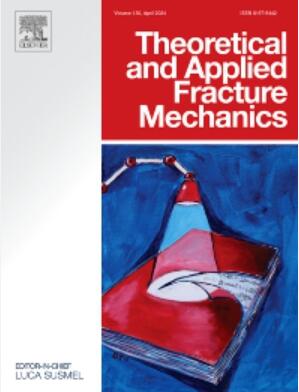基于经验的机器学习和缺陷数据库的再生骨料混凝土断裂预测
IF 5.6
2区 工程技术
Q1 ENGINEERING, MECHANICAL
引用次数: 0
摘要
再生骨料混凝土(RAC)的断裂行为非常复杂,导致试验结果的差异很大,而且缺乏可靠的数据,这给直接预测断裂带来了挑战。该研究解决了如何在使用缺陷实验数据集时提高裂缝预测精度的关键科学问题。首先,基于实验分析和断裂力学模型,提出了一种两步数据处理方法来清理和增强缺陷数据集,提高数据集的可靠性、丰富度和维数。然后,采用集成学习算法构建具有较强泛化能力的鲁棒预测模型(R2 = 0.942)。最后,本研究建立了一个基于经验的人工智能框架,用于利用缺陷数据集进行裂缝预测,为RAC应用中长期存在的挑战提供了一种新颖实用的解决方案。本文章由计算机程序翻译,如有差异,请以英文原文为准。
Fracture prediction in recycled aggregate concrete using experience-based machine learning with a defective database
The fracture behavior of recycled aggregate concrete (RAC) is highly complex, leading to significant variability in test results and a lack of reliable data, making direct fracture prediction challenging. This study addresses the key scientific problem of how to improve fracture prediction accuracy when working with defective experimental datasets. First, based on experimental analysis and fracture mechanics models, a two-step data processing approach is developed to clean and augment the defective dataset, improving its reliability, richness, and dimensionality. Then, an ensembled learning algorithm is employed to construct a robust predictive model with strong generalization capability (R2 = 0.942). Finally, this study establishes an experience-based artificial intelligence framework for utilizing defective datasets in fracture prediction, providing a novel and practical solution to a long-standing challenge in RAC application.
求助全文
通过发布文献求助,成功后即可免费获取论文全文。
去求助
来源期刊

Theoretical and Applied Fracture Mechanics
工程技术-工程:机械
CiteScore
8.40
自引率
18.90%
发文量
435
审稿时长
37 days
期刊介绍:
Theoretical and Applied Fracture Mechanics'' aims & scopes have been re-designed to cover both the theoretical, applied, and numerical aspects associated with those cracking related phenomena taking place, at a micro-, meso-, and macroscopic level, in materials/components/structures of any kind.
The journal aims to cover the cracking/mechanical behaviour of materials/components/structures in those situations involving both time-independent and time-dependent system of external forces/moments (such as, for instance, quasi-static, impulsive, impact, blasting, creep, contact, and fatigue loading). Since, under the above circumstances, the mechanical behaviour of cracked materials/components/structures is also affected by the environmental conditions, the journal would consider also those theoretical/experimental research works investigating the effect of external variables such as, for instance, the effect of corrosive environments as well as of high/low-temperature.
 求助内容:
求助内容: 应助结果提醒方式:
应助结果提醒方式:


